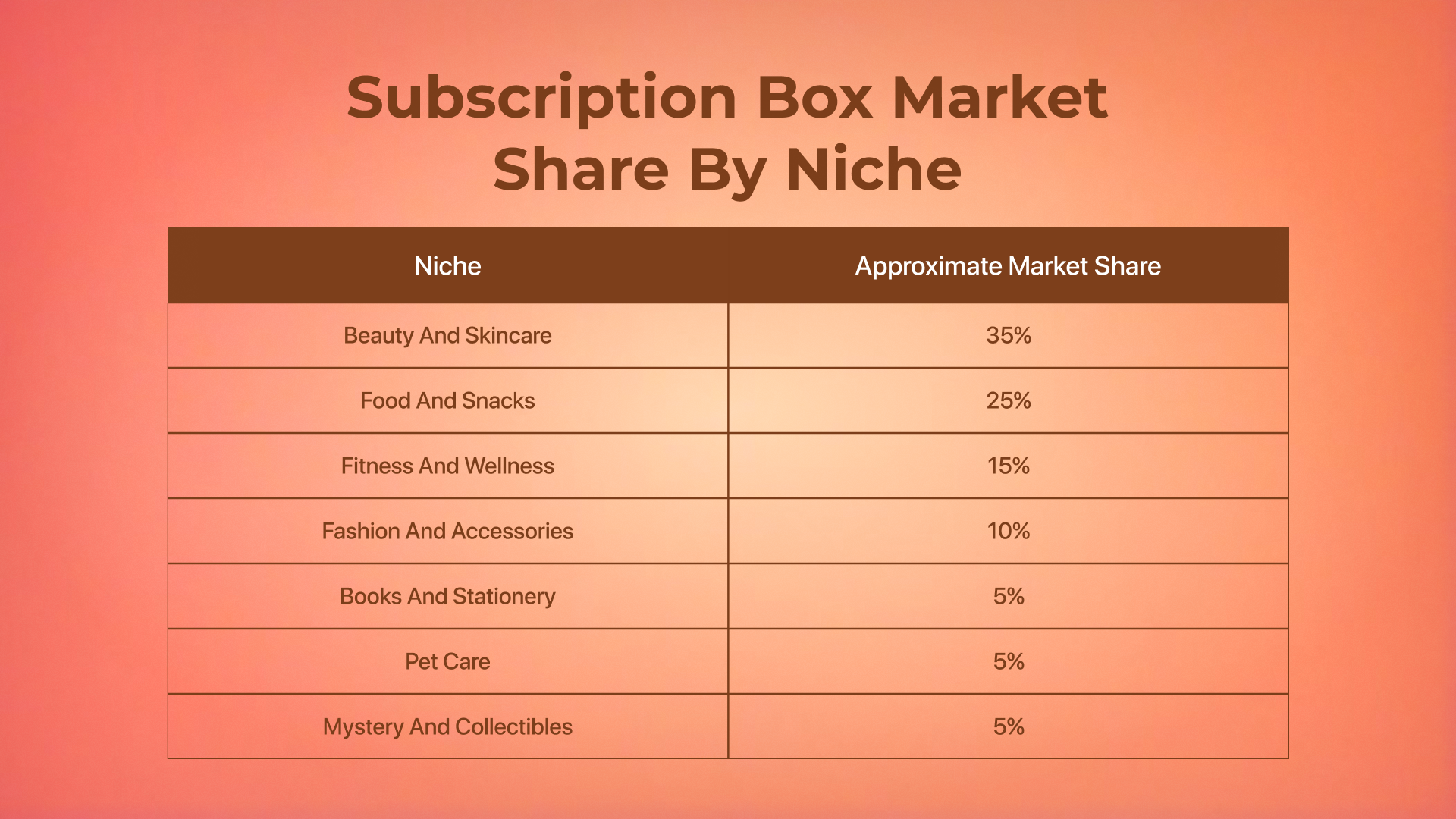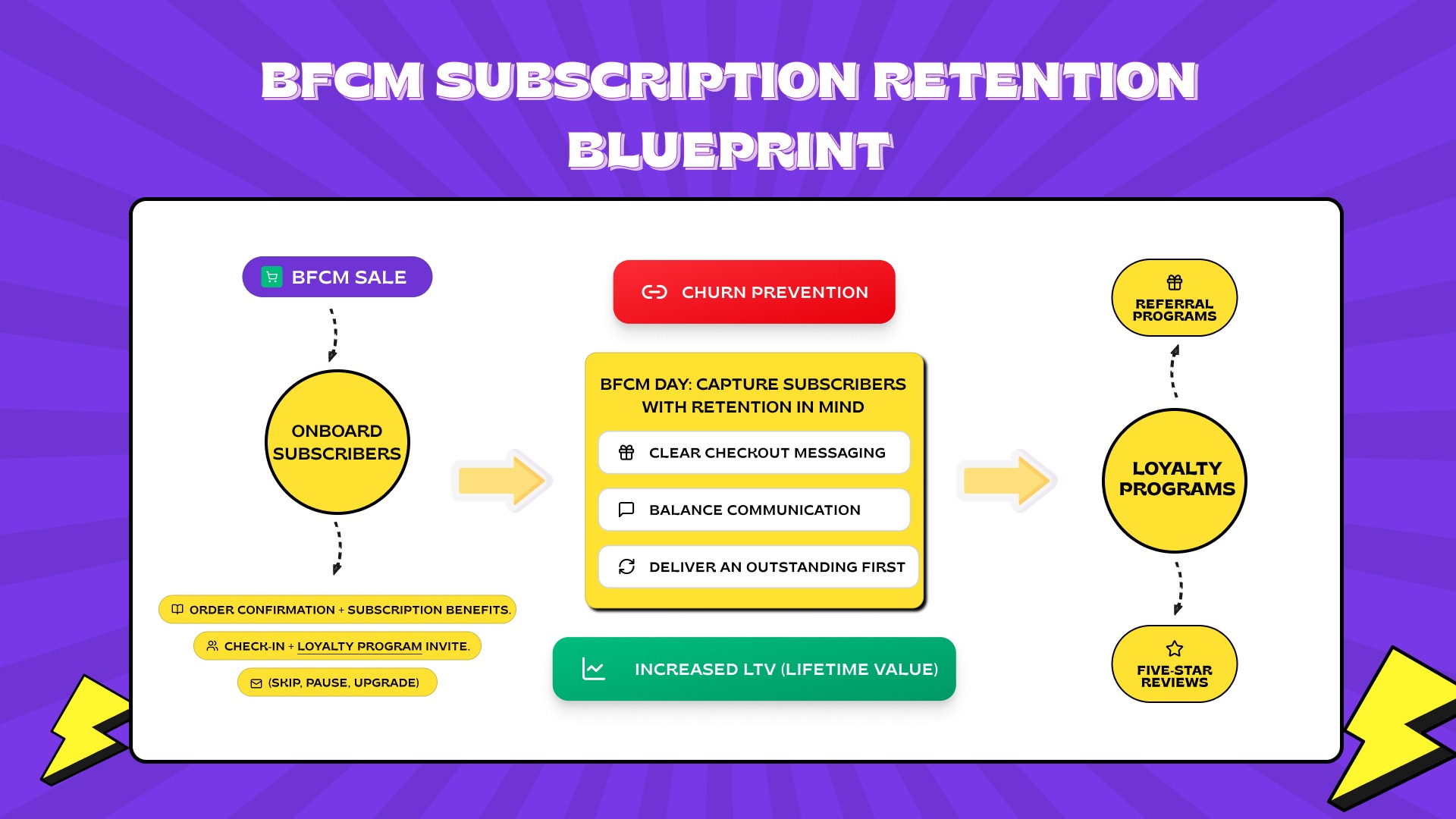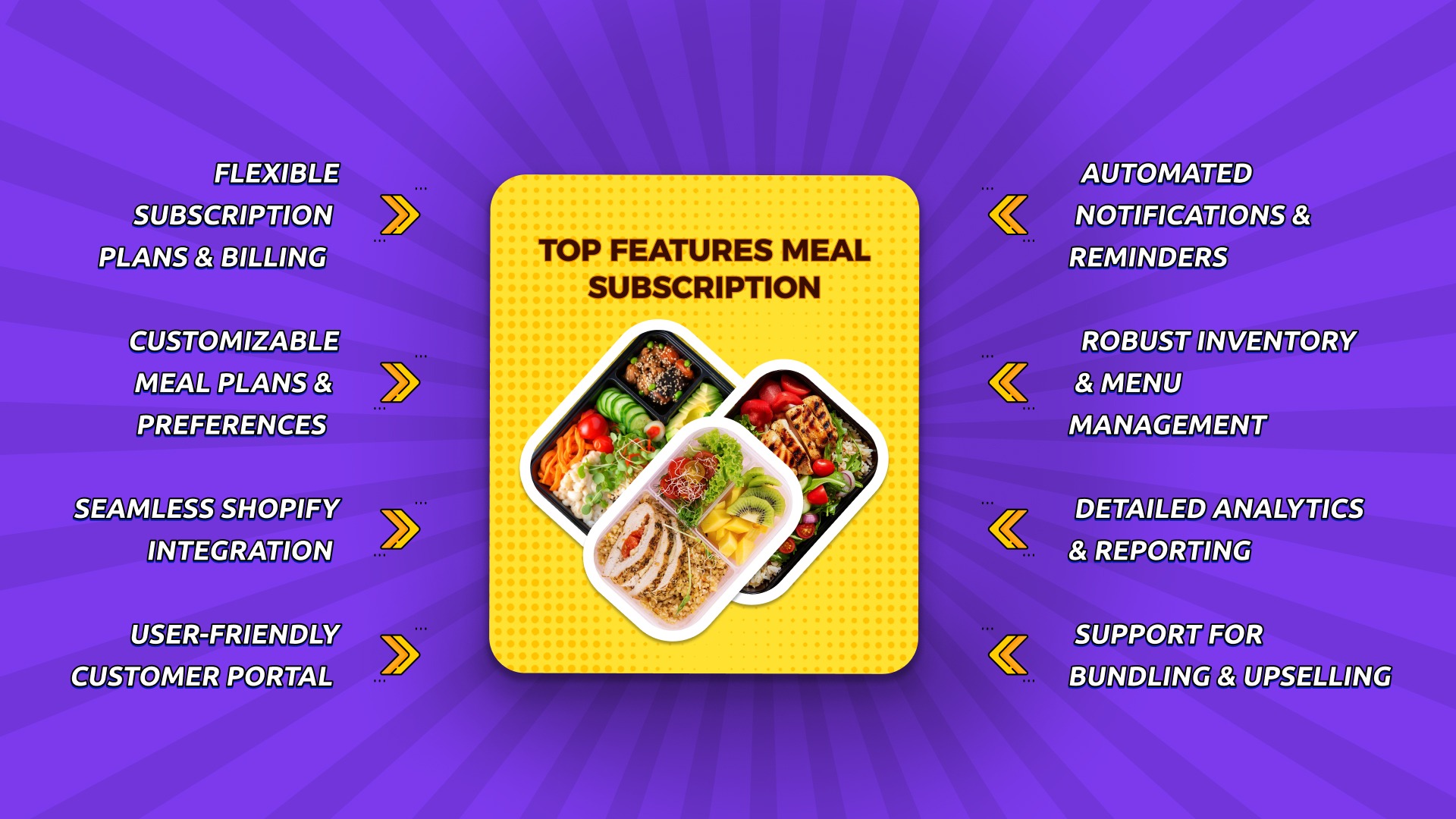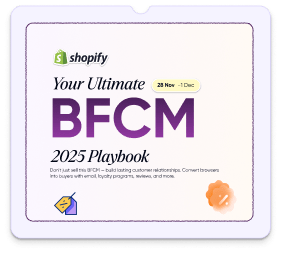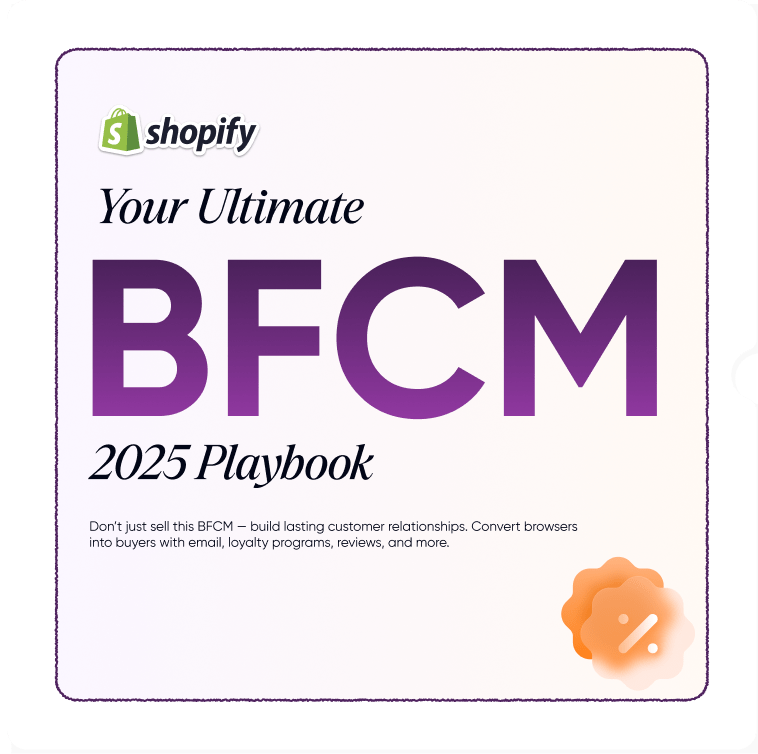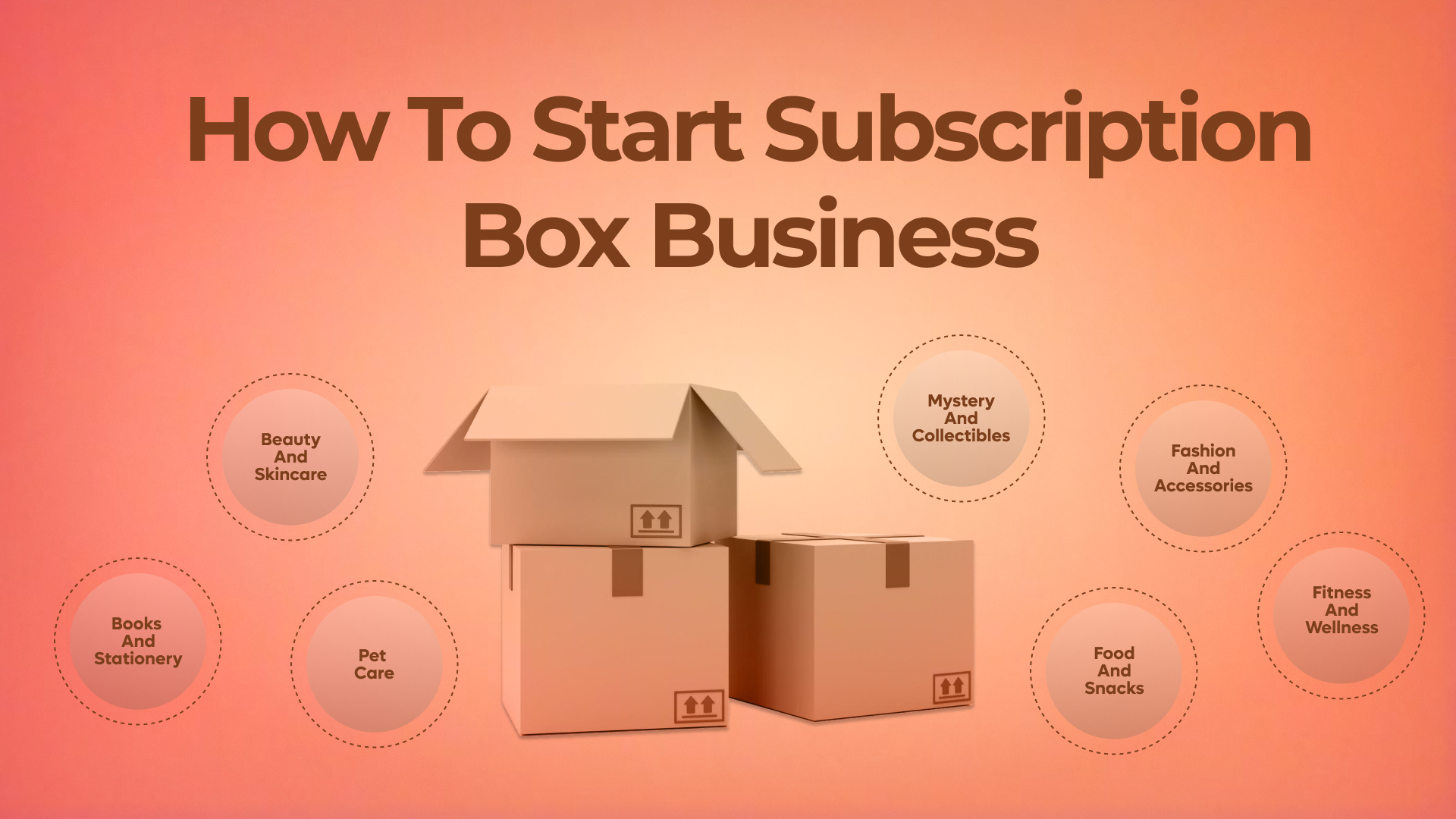
How to Start a Subscription Box Business: A Step-by-Step Guide
Published On: March 28, 2025 - 11 min read
Starting a subscription box business is an exciting opportunity that combines creativity, strategy, and entrepreneurship. Whether you’re interested in beauty products, gourmet snacks, fitness gear, or unique mystery boxes, this business model offers a great way to provide value while generating recurring revenue. In this guide, we’ll walk you through everything you need to know to successfully launch and grow your subscription box business.
What is a subscription box business?
A subscription box business is a service-based e-commerce model where customers receive curated products on a recurring basis, such as weekly, monthly, or quarterly. These boxes typically contain a selection of items tailored to a specific niche, such as beauty products, snacks, books, fitness gear, or pet supplies.
This business model thrives on convenience and personalization, offering customers a unique shopping experience without the hassle of searching for products individually. Companies use customer preferences and data analytics to curate items, ensuring satisfaction and increasing customer retention.
The global subscription box market is projected to reach $41.79 billion by 2025 and grow to $87.06 billion by 2029, driven by personalization and convenience. Subscription box businesses generate recurring revenue, making them an attractive option for entrepreneurs. By providing exclusive, high-quality, or surprise products, these businesses build brand loyalty and encourage long-term customer engagement.
Why is the subscription box industry booming?
The subscription box industry is booming due to the rise of e-commerce, changing consumer preferences, and the demand for convenience. People enjoy personalized experiences, curated products, and the excitement of receiving surprise items regularly. The shift toward online shopping has further fueled this growth, making it easier for businesses to reach customers globally.
Additionally, businesses benefit from a predictable, recurring revenue model, helping them scale efficiently. Social media and influencer marketing have also played a key role in attracting subscribers. As more consumers seek hassle-free shopping and exclusive products, the subscription box industry continues to expand rapidly.
Who can start a subscription box business?
Anyone with a passion for a niche market and a good understanding of customer preferences can start a subscription box business. Entrepreneurs, small business owners, and even individuals looking for a side hustle can enter this industry with minimal upfront investment.
E-commerce experience is helpful but not required, as platforms like Shopify and subscription management apps simplify the process. Those with expertise in product sourcing, branding, and marketing can create a competitive edge. Whether it’s a beauty enthusiast, a fitness coach, or a pet lover, anyone with a creative idea and a strong marketing strategy can successfully launch a subscription box business.
The Step-by-Step Guide to Launching a Successful Subscription Box Business
To help you get started, here’s a step-by-step guide to creating a profitable subscription box business. Follow these steps to turn your idea into a thriving venture!
Step 1: Choose Your Niche
Selecting the right niche is key to building a successful subscription box business. Your niche should cater to a specific audience with a clear demand for curated products. A well-defined niche helps you stand out in a competitive market and attract loyal subscribers.
Popular Subscription Box Niches
Here are some of the most popular and profitable niches in the subscription box industry:
- Beauty and Skincare Subscription Boxes – Includes makeup, skincare, and self-care products tailored to different skin types and preferences. Popular categories include organic beauty boxes, K-beauty subscription boxes, and clean skincare kits.
- Food Subscription Boxes & Snack Boxes – Features gourmet treats, international snacks, meal kits, and organic or healthy food options. Trending categories include vegan snack boxes, keto meal subscriptions, and international snack boxes.
- Fitness and Wellness Subscription Boxes – Offers supplements, workout gear, and wellness essentials to promote a healthy lifestyle. Top searches include yoga subscription boxes, protein snack boxes, and self-care wellness kits.
- Book Subscription Boxes & Stationery Kits – Provides curated book selections, journals, and creative writing materials for book lovers and writers. Popular options include mystery book boxes, fantasy book subscriptions, and stationery subscription boxes.
- Mystery and Collectibles Subscription Boxes – Ideal for fans of pop culture, comics, puzzles, or limited-edition collectibles. Popular searches include anime subscription boxes, Funko Pop mystery boxes, and sci-fi collectible boxes.
- Pet Subscription Boxes – Includes treats, toys, and grooming products for pets, catering to pet owners looking for convenience. High-ranking keywords include dog subscription boxes, cat treat boxes, and pet toy subscription services.
- Fashion and Accessories Subscription Boxes – Delivers trendy clothing, jewelry, or seasonal accessories to fashion enthusiasts. Popular categories include luxury fashion boxes, jewelry subscription services, and seasonal clothing subscription boxes.
Market Share of Popular Subscription Box Niches
How to Validate Your Subscription Box Idea
Before launching your subscription box, it’s essential to validate your idea to ensure demand and profitability.
- Market Research – Identify target customers, analyze trends, and assess the potential for growth in your chosen niche.
- Competitor Analysis – Study existing subscription boxes in your niche, understand their pricing, offerings, and customer feedback to find opportunities for differentiation.
- Survey Potential Customers – Conduct surveys or engage with your audience through social media to gather insights on their preferences, pricing expectations, and product interests.
By carefully selecting and validating your niche, you can build a subscription box business that resonates with customers and ensures long-term success.
Step 2: Identify Your Target Audience
Once you’ve chosen your niche, the next step is to define your target audience. Understanding who your ideal customers are will help you create a subscription box that meets their needs, solves their problems, and keeps them subscribed for the long term.
Understanding Customer Pain Points
To attract and retain customers, you need to identify their challenges and how your subscription box can solve them. Ask yourself:
- What problems does my target audience face?
- How can my subscription box provide convenience or add value?
- Are there gaps in the current market that my box can fill?
For example, a healthy snack box could target busy professionals who struggle to find nutritious on-the-go snacks, while a self-care subscription box could cater to individuals looking for stress relief and relaxation.
Creating Customer Personas
A customer persona is a detailed profile of your ideal customer based on demographics, interests, and buying behaviors. Creating personas helps you refine your marketing strategy and product selection.
Consider the following factors when building customer personas:
- Age, gender, and location – Who is your primary customer? Are they students, working professionals, or parents?
- Lifestyle and interests – What hobbies or passions do they have? Are they into fitness, reading, or skincare?
- Shopping behavior – Do they prefer luxury items, eco-friendly products, or budget-friendly options?
- Pain points and motivations – What drives their purchasing decisions? Are they looking for convenience, savings, or exclusive items?
By clearly identifying your target audience, you can design a subscription box that truly resonates with your customers, leading to higher satisfaction and long-term business success.
Step 3: Source Your Products
Sourcing high-quality products is key to a successful subscription box business. You need to find reliable suppliers who can consistently provide the right products at competitive prices while maintaining quality.
Partnering with Suppliers and Wholesalers
Building relationships with manufacturers, wholesalers, or local artisans can help you get products at bulk prices, reducing costs. Look for suppliers who align with your brand values and offer flexibility in order quantities.
Dropshipping vs. Self-Fulfillment
Dropshipping allows you to send products directly from suppliers to customers without holding inventory, reducing upfront costs. Self-fulfillment, on the other hand, gives you more control over packaging and quality but requires storage space and logistics management.
Cost Considerations
Factor in product costs, shipping fees, packaging materials, and subscription pricing to ensure profitability. Finding a balance between affordability and quality is crucial to keeping customers satisfied while maintaining healthy profit margins.
Step 4: Pricing Your Subscription Box
Setting the right price for your subscription box is crucial to ensuring profitability while remaining attractive to customers. A well-planned pricing strategy should cover costs, provide value, and keep your business sustainable.
Understanding Profit Margins
To determine a profitable price, calculate the total cost per box, including product sourcing, packaging, shipping, marketing, and platform fees. Ensure your pricing leaves room for a healthy profit margin while keeping the box affordable for your target audience.
Subscription Pricing Models
There are different pricing models you can offer:
- Monthly Plans – Flexible and appealing to new customers but may have a higher churn rate.
- Quarterly Plans – Encourage longer commitments and help with revenue stability.
- Yearly Plans – Offer the best value for customers while providing consistent revenue upfront.
Providing discounts for longer subscriptions can encourage customer retention and boost lifetime value.
Competitive Pricing Analysis
Research similar subscription boxes in your niche to understand industry pricing trends. Compare their features, product quality, and customer reviews to find a competitive yet profitable price point. Offering unique value, such as exclusive products or personalized experiences, can justify premium pricing and attract more subscribers.
Step 5: Set Up Your Online Store
A well-structured online store is essential for the success of your subscription box business. Your website is the main platform where customers will learn about your service, place orders, and manage their subscriptions. Here’s how to get started:
Best Platforms for Subscription Boxes
Choosing the right platform is critical for managing subscriptions, payments, and product deliveries. Here are some popular options:
- Shopify – Known for its user-friendly interface and integration with subscription apps. Perfect for businesses aiming to grow rapidly.
- WooCommerce – A flexible and cost-effective choice for those using WordPress, with plugins designed for subscription management.
These platforms offer the tools needed to manage subscriptions, inventory, payments, and customer support effectively.
Must-Have Features for Your Website
Your website should be easy to navigate and focused on converting visitors into subscribers. Some must-have features include:
- Subscription management – Allow customers to easily manage their plans, update billing information, or skip a month.
- Product pages – Showcase the contents of your subscription box with high-quality images and detailed descriptions.
- Secure payment options – Offer a range of trusted payment methods, including credit cards and PayPal, for smooth transactions.
- Easy Checkout Process – Simplify the checkout experience with easy navigation, secure payment options, and a clear subscription plan overview.
- Customer reviews and testimonials – Social proof builds trust and encourages others to subscribe.
- Mobile responsiveness – Ensure your website is optimized for mobile devices, as many customers shop on their phones.
By choosing the right platform and adding key features, your online store will provide a seamless shopping experience, helping to grow your subscription box business.
Simplify your store setup—download our Easy Subscriptions App to manage recurring payments and subscriber plans with ease!
Step 6: Create an Effective Marketing Strategy
A strong marketing strategy helps attract and retain customers. Use these tactics to boost visibility and sales:
- Social Media Marketing – Showcase products on Instagram, Facebook, and TikTok. Engage with customers through behind-the-scenes content, reviews, and exclusive offers.
- Influencer Collaborations – Partner with niche influencers to expand reach and build trust through authentic endorsements.
- Email Marketing – Nurture leads with targeted email campaigns, offering discounts, updates, and personalized content.
- SEO & Content Marketing – Optimize your website with keywords and create valuable content like blogs and guides to attract organic traffic.
Implementing these strategies will help grow your subscription box business effectively!
Step 7: Handle Packaging and Shipping
Efficient packaging and shipping are critical to the success of your business. Ensure the following:
Packaging
- Create an Unboxing Experience: Customers love the surprise element of subscription boxes. Use custom packaging that enhances the unboxing experience and strengthens your brand identity.
- Eco-Friendly Options: Consider using sustainable packaging to appeal to eco-conscious consumers.
Shipping
- Reliable Partners: Work with trusted carriers like USPS, UPS, or FedEx to ensure on-time delivery.
- Optimize Shipping Costs: Negotiate bulk shipping rates with carriers to reduce the overall cost of shipping.
Step 8: Manage Customer Retention & Growth
It’s not enough to simply attract new customers; you need to keep them engaged for the long term.
- Excellent Customer Service: Providing exceptional customer service is key to building long-term relationships. Ensure prompt response times and easy returns or exchanges.
- Loyalty Programs and Referral Incentives: Offer customers rewards for subscribing for multiple months or referring friends to your service. Consider offering discounts, free products, or exclusive items for loyal customers.
- Monitor Feedback: Listen to your customers. Their feedback is invaluable in improving your products, services, and overall customer experience.
Step 9: Scaling Your Subscription Box Business
To scale your subscription box business for long-term growth, focus on these key strategies:
- Expanding Product Offerings: Introduce new themes, seasonal collections, or exclusive products to keep subscribers engaged and attract new customers. Customizable items can boost loyalty.
- Running Paid Advertising Campaigns: Use platforms like Google Ads, Facebook, and Instagram to target specific demographics and retarget interested users. Monitor and adjust campaigns for maximum impact.
- Partnering with Brands for Exclusives: Collaborate with brands to offer exclusive products, attracting new customers and enhancing your credibility. These partnerships help tap into new audiences.
By expanding your offerings, investing in paid ads, and partnering with brands, you’ll grow your business and build a loyal customer base.
Final Thoughts
Starting a subscription box business requires careful planning, creativity, and dedication. By selecting a strong niche, sourcing quality products, and implementing effective marketing strategies, you can create a thriving business that delights customers every month. Success takes time, so stay patient, adaptable, and focused on delivering value to your subscribers. Now, take the first step toward launching your subscription box business and turn your vision into reality!
Ready to launch? Download Easy Subscriptions App today to manage your subscribers like a pro and build a thriving business!


